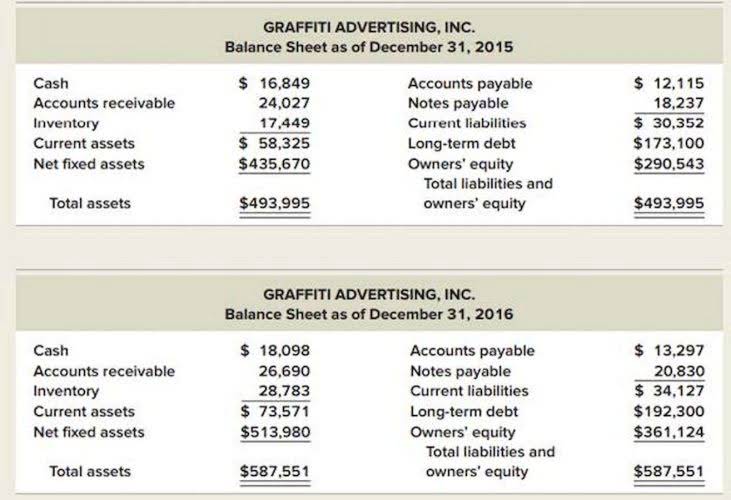
Smartsheet provides a better way to unify collaboration and automate workflows so you can spend more time on the work that matters. Feeling inundated with too many spreadsheets, repetitive data entry, and version-control issues? If the structure or mission of your organization seems to share some things with them, that’s a good sign that you should apply. Creating lasting relationships with your suppliers and partners will save you time, energy, and even money! The better relationships you build early on, the easier things will be in coming years. Throughout the year, you’ll be able to track which avenues are working best for you.
- The template’s operating expenses section allows you to easily determine your rolling cash balance.
- It serves as the backbone of your nonprofit’s spending, fundraising, and much more.
- This can be challenging because, unlike for-profit businesses, nonprofits rely on a wide variety of funding sources.
- Check out Keela’s guide to nonprofit salaries to understand more about what to pay your team.
- A good budget for non-profit organizations balances program delivery with operational sustainability.
What is nonprofit budgeting?
Put another way, the budget for fixed costs should be limited to an amount that is equal to or less than the revenues you can count on. Nonprofit organizations often rely on multiple sources of funding to support their missions. However, revenue diversification is not merely about having multiple income streams; it is an essential strategy for long-term sustainability and growth. Diversifying revenue sources can bolster financial resilience, reduce dependency on a single funding channel, and open doors to new opportunities. A good budget for non-profit organizations balances program delivery with operational sustainability. Rather than focusing on specific dollar amounts, aim to maintain program spending at 65-75% of your budget, with adequate allocation for administrative costs (15-20%) and fundraising (10-15%).
Small Business
If you’re creating a budget for the first time, create as reasonable a how to calculate operating budget nonprofit list as possible of expenses. Be sure to include these expenses if the organization needs to rent or maintain a physical location for its operations. If your nonprofit can operate remotely, you may be able to save a considerable amount of money in this category. Nonprofits have to walk a fine line between funding their fundraising and funding their mission efforts—be sure to think through this balance carefully. Finding sponsors for your events can help you earmark a larger portion of your fundraising for your mission program expenses. Regular budget reviews on a quarterly or yearly basis are essential to see if you’re hitting your expected benchmarks in both revenue and expenses.

Which of these do you expect will have the biggest impact on your nonprofit in 2025?
Mark the events in everyone’s calendars, so that it becomes easier to repeat virtual accountant the process each year. Let’s dive into the details of a nonprofit operating budget—what it is, what to include, and how to put it all together. Get our FREE guide to nonprofit financial reports, featuring illustrations, annotations, and insights to help you better understand your organization’s finances. While you should consider everything, be as realistic as you can in setting revenue projections.
Fundraising Efficiency: 4 Event-Planning Tips for Nonprofits
This information is hugely important, because it shows you the best (and safest!) times to spend. Get an idea of who the granting bodies are, who they typically choose to support, and how much funding they have to offer. Once your costs are set, you know precisely what numbers you can expect to work with. Making a budget is a whole lot easier when you’re not relying on guesswork. Annual goals are absolutely necessary, but open yourself up to what could be possible five years from now.
Understanding the Basics of a Nonprofit Operating Budget
- The budget’s name changes to “operating budget” because the organization may alter the adopted budget throughout the fiscal year.
- This allows for a better overview, more speedy addressing of any potential issues, more nimble management of the staff and volunteers, and a more informed everyday decision-making process.
- These include traditional income sources like the sale of products and services as well as nonprofit-specific income sources like fundraising and grants.
- Put your most frequent sources of funding into group 1, the least frequent in group 4, and so on.
- Having a carefully thought-out budget is one great way to get your organization going in that direction.
To help you get started, we’ve created a basic nonprofit budget template to track your revenue and expenses. It will work as a framework regardless of your nonprofit’s area of focus. To ensure that your nonprofit is adequately funded, be sure to set a separate budget for each department within your overall financial plan. By allocating funds to specific programs and initiatives, you can track and manage expenses more effectively and ensure that resources are distributed appropriately. Nonprofit operating budgets typically include expected revenue as well as various expense categories that reflect the organization’s day-to-day activities and operational needs.

What Is the Relationship Between an Operating & a Cash Budget?

Set up your budget so it’s as simple as filling in the blanks come next year. Do what you can to structure your budgets similarly over the years—this will make it easier to compare them side by side as you track your growth. A nonprofit project budget shows you what you have to gain without accidentally dipping into your operational expenses. Unfortunately, it often excludes people outside an organization’s finance team. Similarly, the budget is often too focused on the present knowns without regard for the unknowns or the future.
Expenses
By analyzing your previous year’s budget, you can get a clear understanding of your organization’s financial needs and how they may have changed over time. This can help ground you in setting realistic goals for your expenses and fundraising efforts. If you’ve been conservative in your projected revenue and your nonprofit operating budget breaks even, you can be fairly confident of being able to reach your contribution margin short-term goals. Track your nonprofit’s project-specific budget with this basic template.

While it might be less than ideal to underspend when your organization has the capacity to spend more, it’s far worse to overestimate fundraising or grants and end up scrambling to cover costs. Before you can figure out where your nonprofit is going, it’s vital to figure out what happened in the past. Take time to collect financial data from previous years as best as possible. Additionally, for-profit budgets often have expenses closely linked to revenue, like the cost of goods sold or employee wages. That’s not the case for most nonprofits, which have separate arms for raising money and carrying out their missions. In order for nonprofits to determine how much money they require to operate, they need an accurate way to account for all income and costs.

Leave a Reply